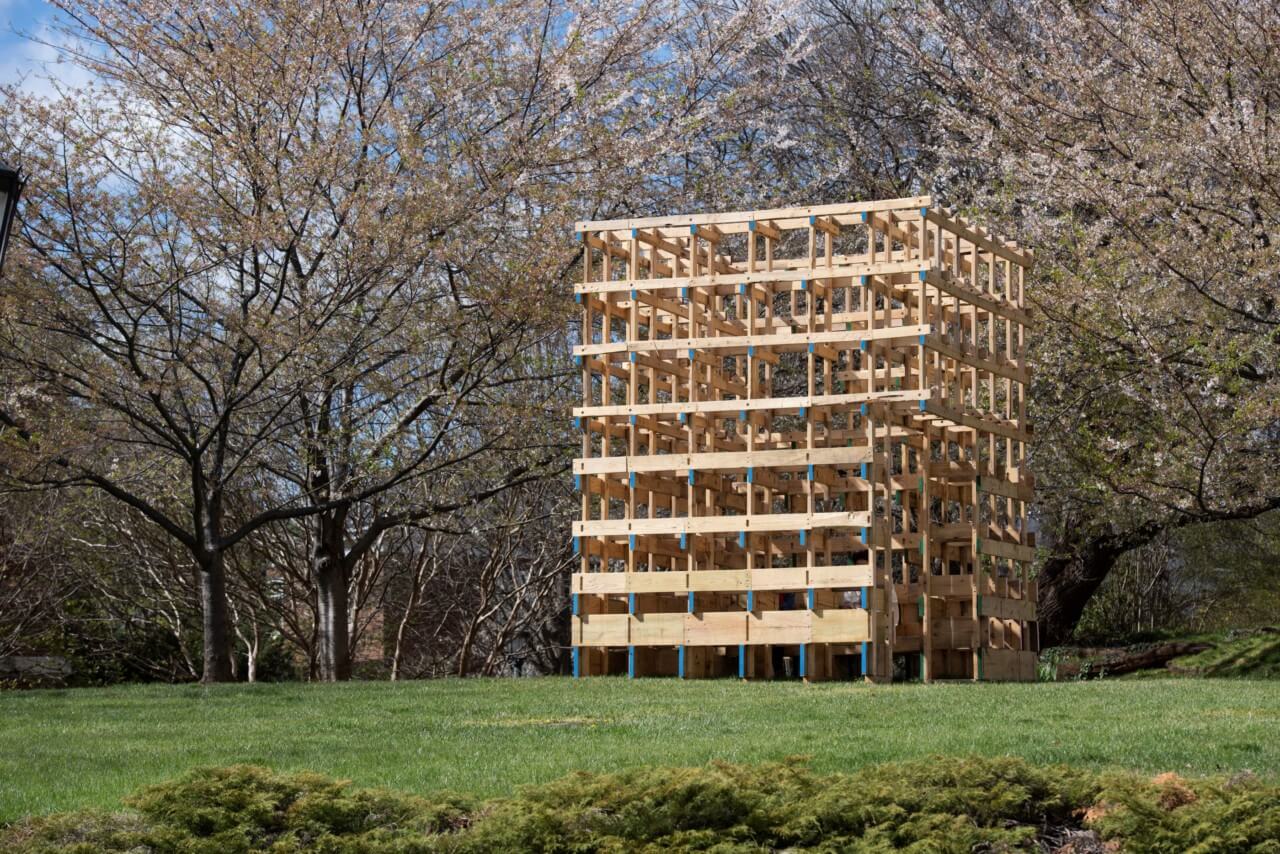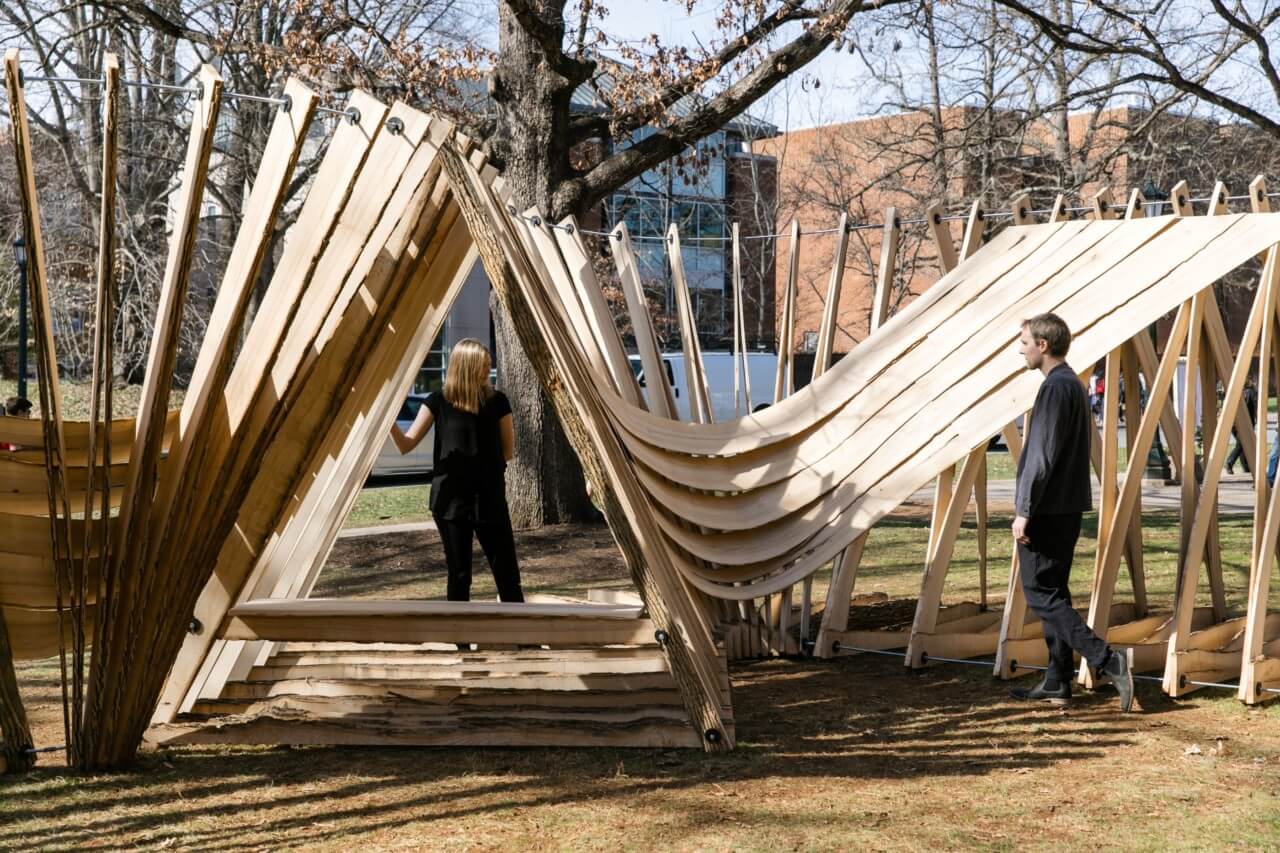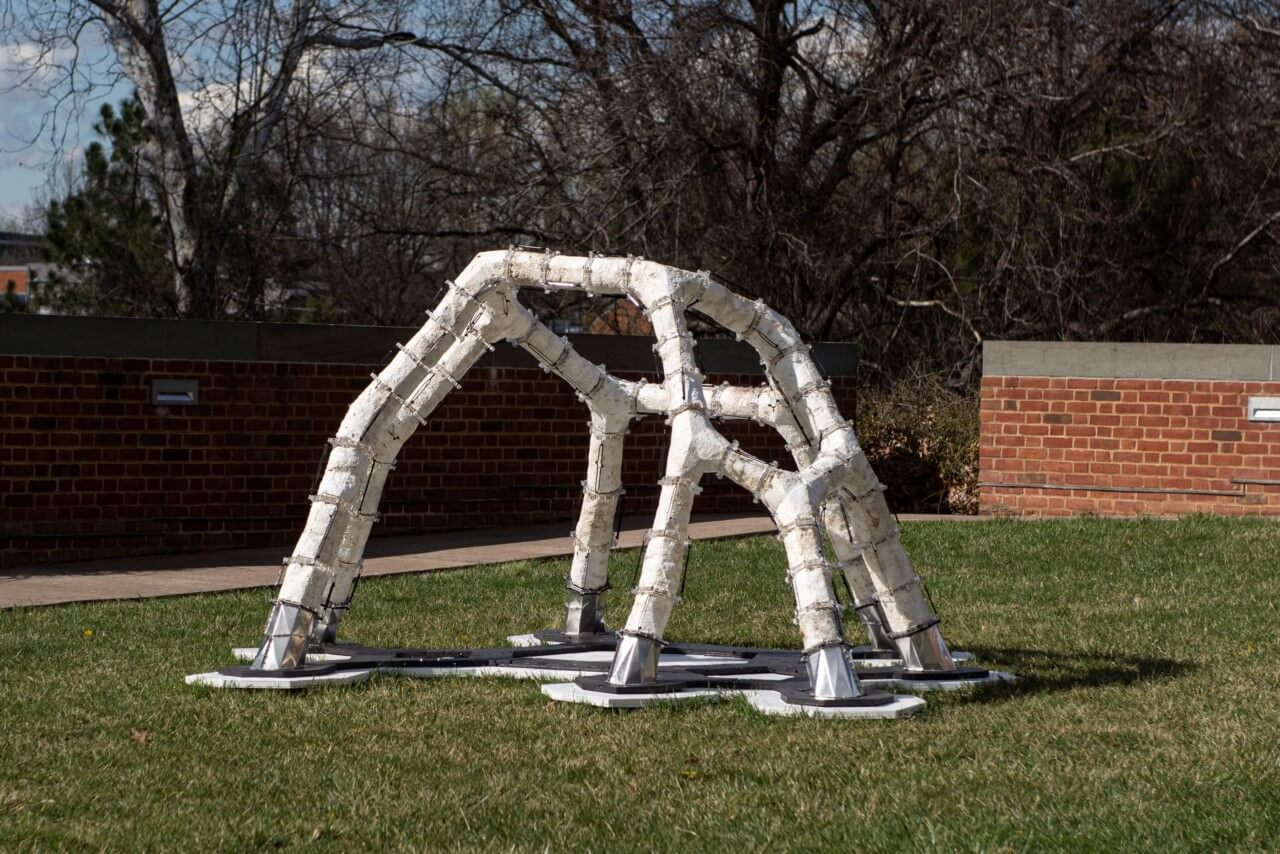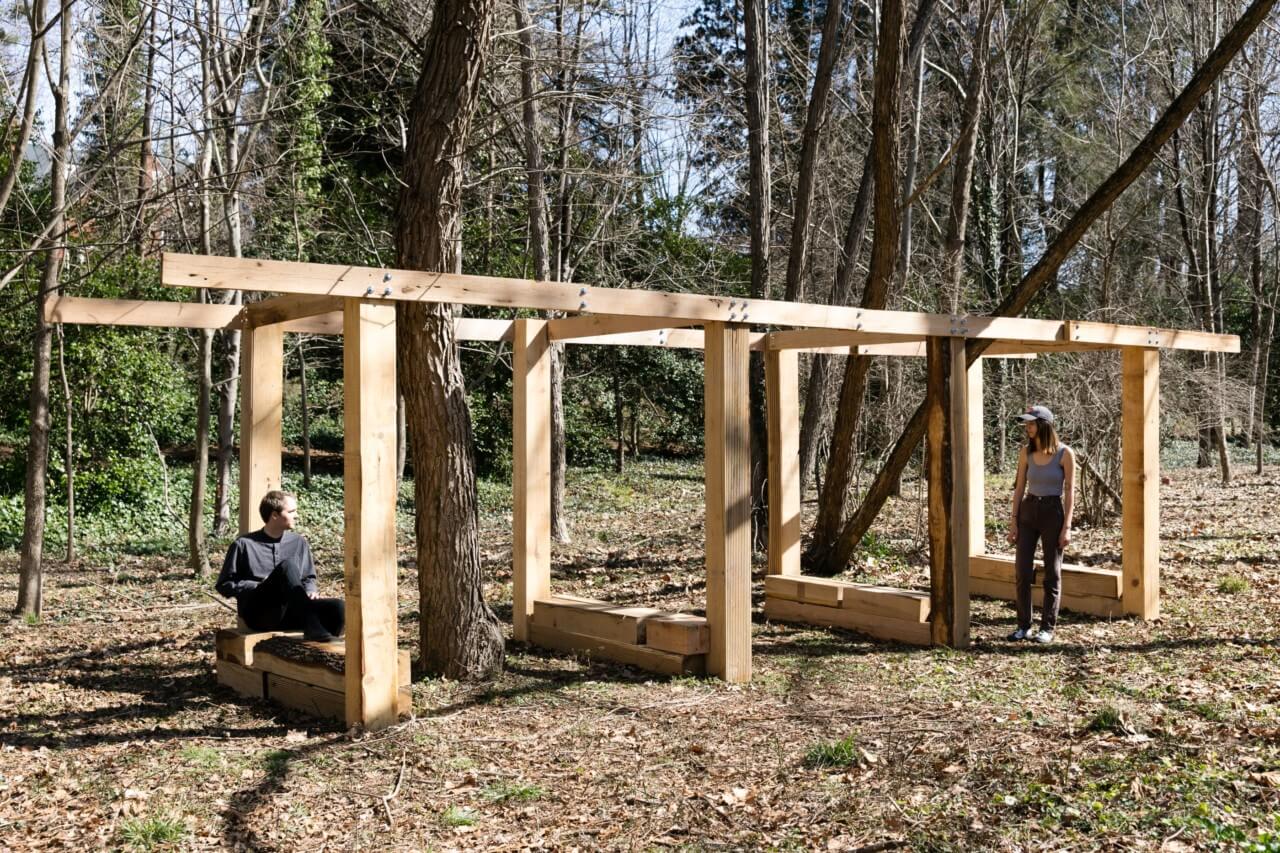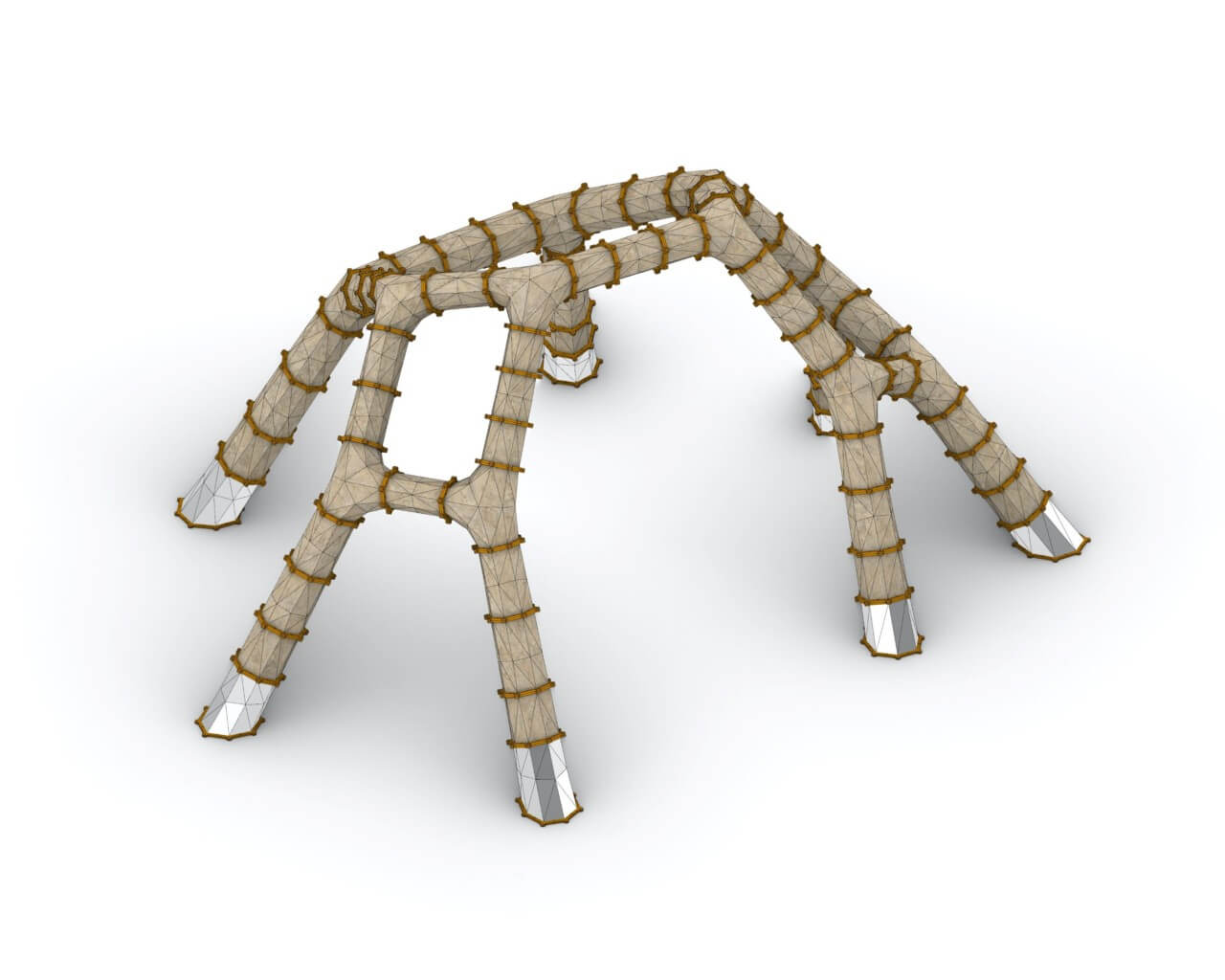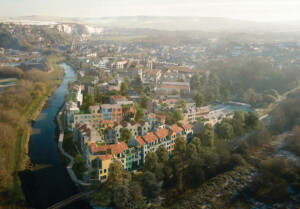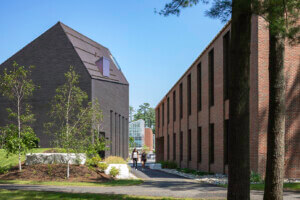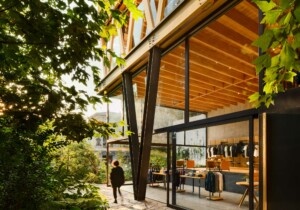Like nature, technology is a loaded word, full of connotations and mental images of progress and human ingenuity. Traditionally understood, the two terms are perhaps at odds with one another; even the notion that humans have disturbed nature or the natural order still places humanity as an “other,” separate and above the rest of the world. In actuality, the two exist in symbiotic relation to one another; there is no divide between the techno-human and the natural worlds.
A groundbreaking exposition at the University of Virginia School of Architecture called the Biomaterial Building Exposition exposes the overlap of the technological and the natural as they relate to architecture. Curated by Katie MacDonald and Kyle Schumann, assistant professors at University of Virginia (UVA) and cofounders of design firm After Architecture, the show consists of five installations on construction with biomaterials, organically-derived, rapidly-renewable, and carbon-sequestering building materials, such as timber and mycelium, across the school’s Charlottesville grounds, alongside a gallery exhibition documenting process work by the featured designers.
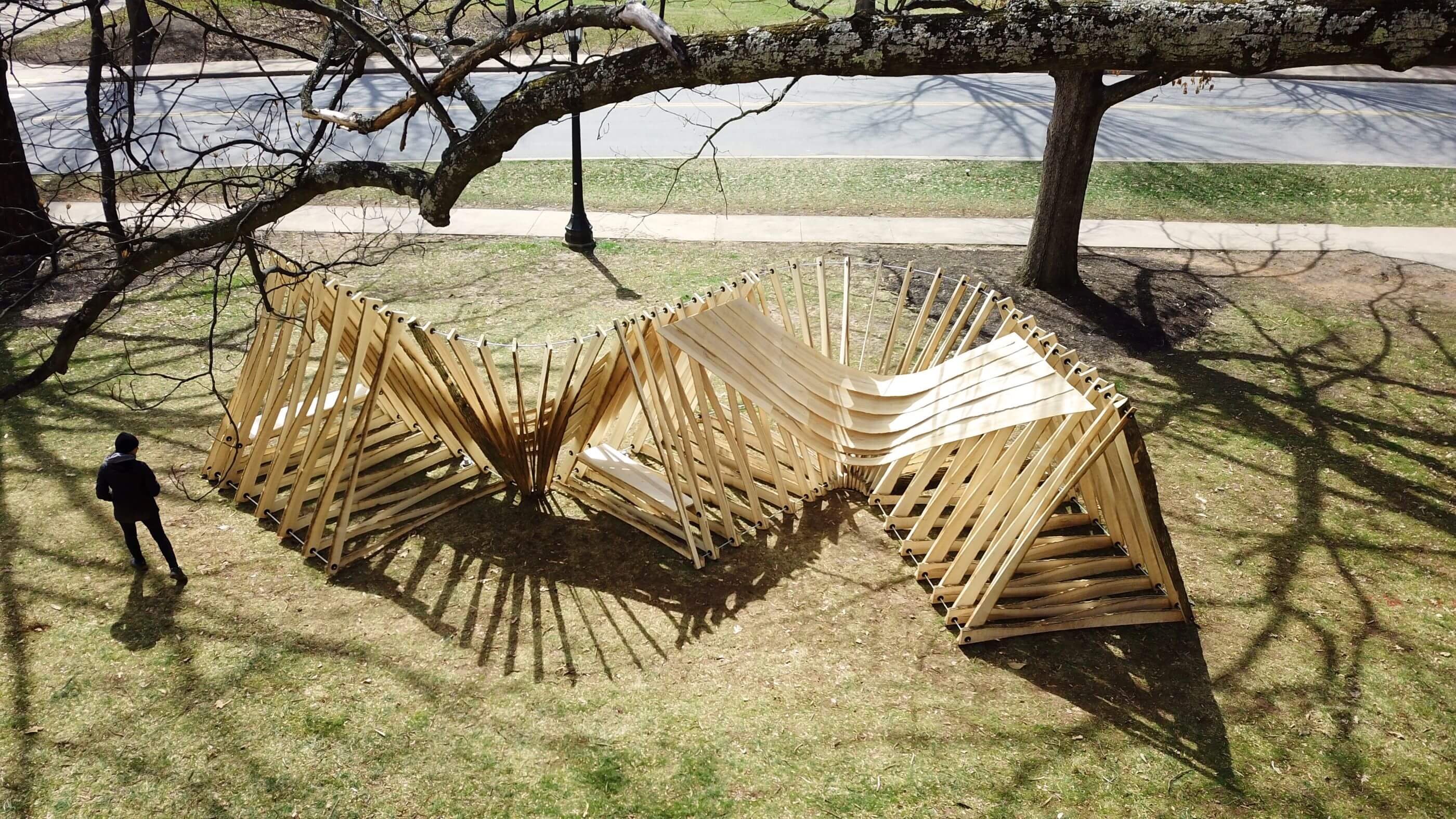
“The goal of the exposition was to have this work be very public facing,” Schumann told AN. “[We] wanted to show the public what these new materials and fabrication methods and technologies were like. For us, this new area of biomaterials as a potential path to deal with the construction industry’s contribution to the climate crisis [and] as an area that might produce new architectures is really exciting.”
Each installation is a full-scale prototype, a model for how architecture could intervene in the life cycles of material and resource extraction, fabrication, construction, and recycling. The issues the exposition tackles require buy-in from extra-disciplinary agents. But much like the rapid adoption of cross-laminated timber (CLT) by the mainstream construction industry, which was popularized following installations, provocations, and ambitious projects like Jennifer Bonner’s Haus Gables, Schumann and MacDonald are concerned primarily with the spatial, formal, and material strategies as a means of showcasing the possibilities new biomaterials for architecture.
At the same time, “we’re also into borrowing techniques and technologies from these other industries,” MacDonald noted, citing the logging industry’s use of 3D scanning technology to optimize milled output based on the given characteristics of a singular log. In perhaps the most technologically-intensive of the installations, Unlog by HANNAH Office appropriates this technology and robotically slices unrollable ribbons of raw logs, turning them into a new kind of light framing.
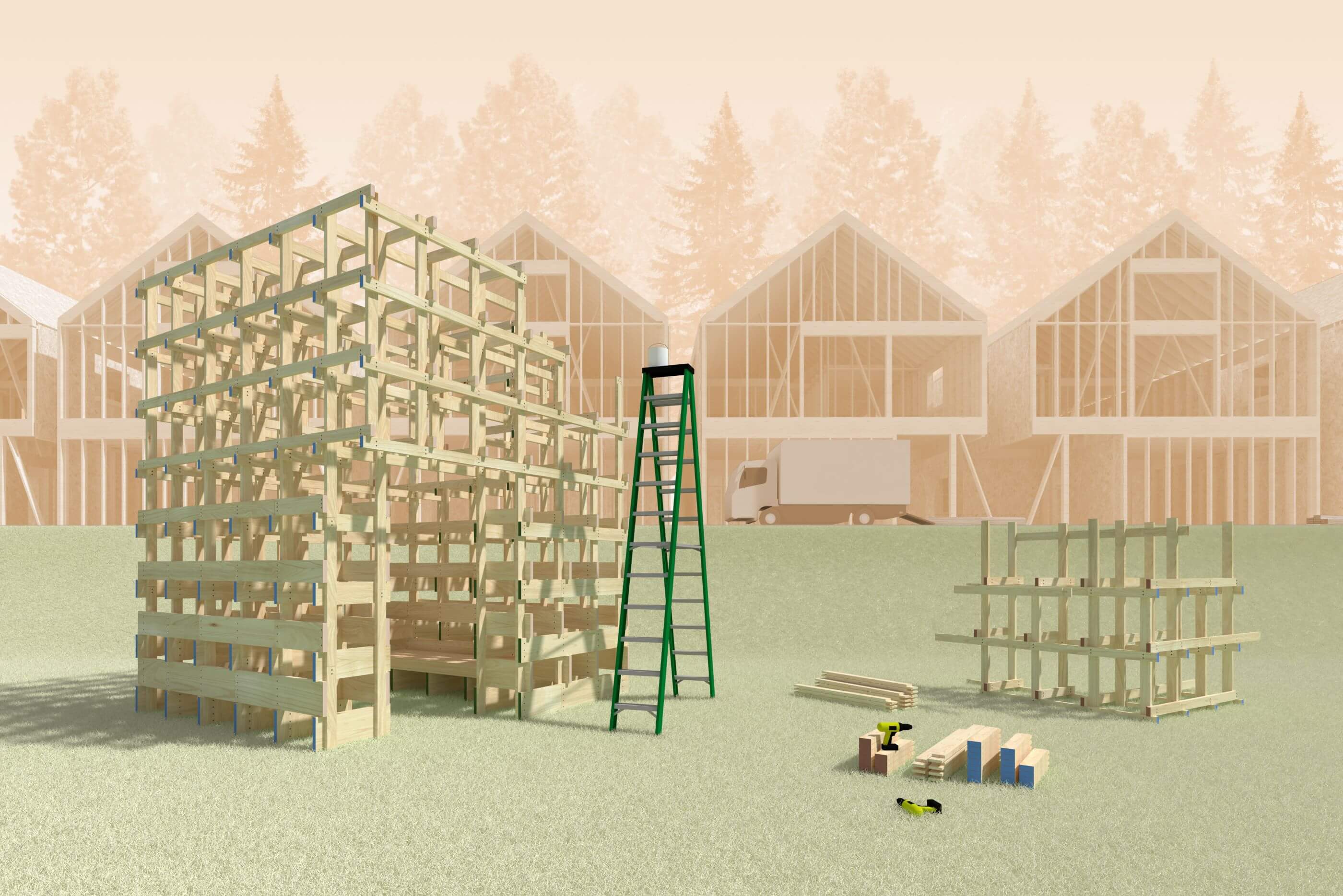
Two other installations also present wood, albeit in more traditional forms. Mix and Match (pictured at top), by Somewhere Studio, utilizes short lengths of various-sized waste dimensional lumber from a housing development the firm designed in Dallas, Texas, bolted together into a three-dimensional framework. From Wood to Tree, by Liz Galvez of Office e.g., gives new meaning to reforestation, with a site-specific framework of timbers milled from felled logs on the grounds that host ecological and biological growth and degradation processes, eventually becoming deadwood and providing nutrients back to the forest floor. Wood is a natural carbon sink, the most beneficial of major structural materials when forested responsibly, and incredibly versatile, leading to the various technological, material, and aesthetic approaches by HANNAH Office, Somewhere Studio, and Office e.g.
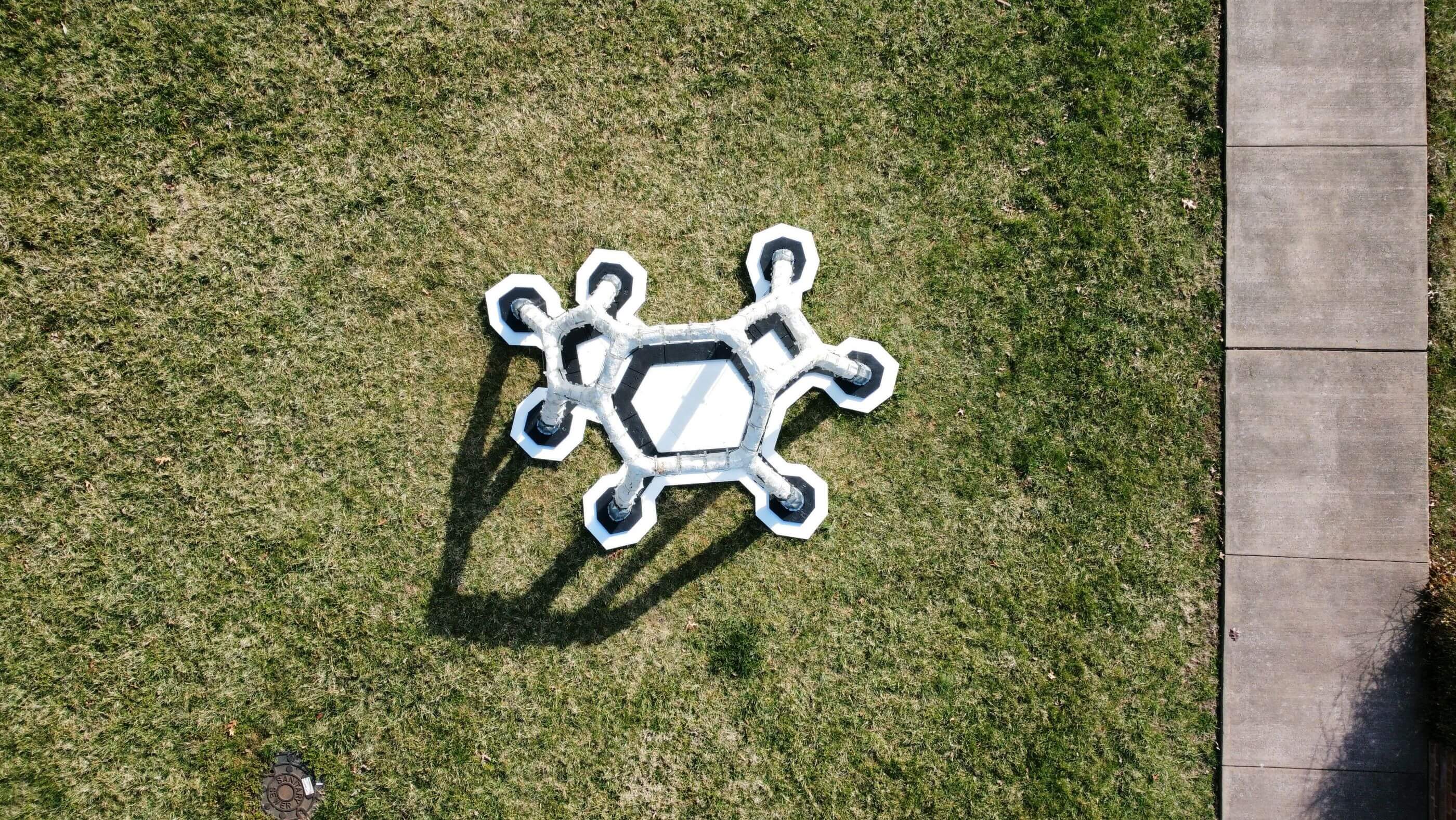
Another less widely-used biomaterial in its architectural infancy shown in the exhibition is mycelium, the fungal “roots” from which mushrooms grow. Designers Benay Gürsoy Toykoç and Jonathan Dessi-Olive used the biodegradable fungus for their installations, MycoCreate 2.0 and La Parete Fungina, respectively. MycoCreate 2.0 is a branching vault structure made up of 64 load-bearing mycelium blocks cast into place with paper formwork feed that the mycelium grows into; computational simulations were run to find a compression-only structural geometry. La Parete Fungina is a series of mycelium bricks which form an excerpt of a serpentine wall, inspired by the historic winding brick walls on UVA’s campus, but completely biodegradable and ironically taking on a snowy timber aesthetic.
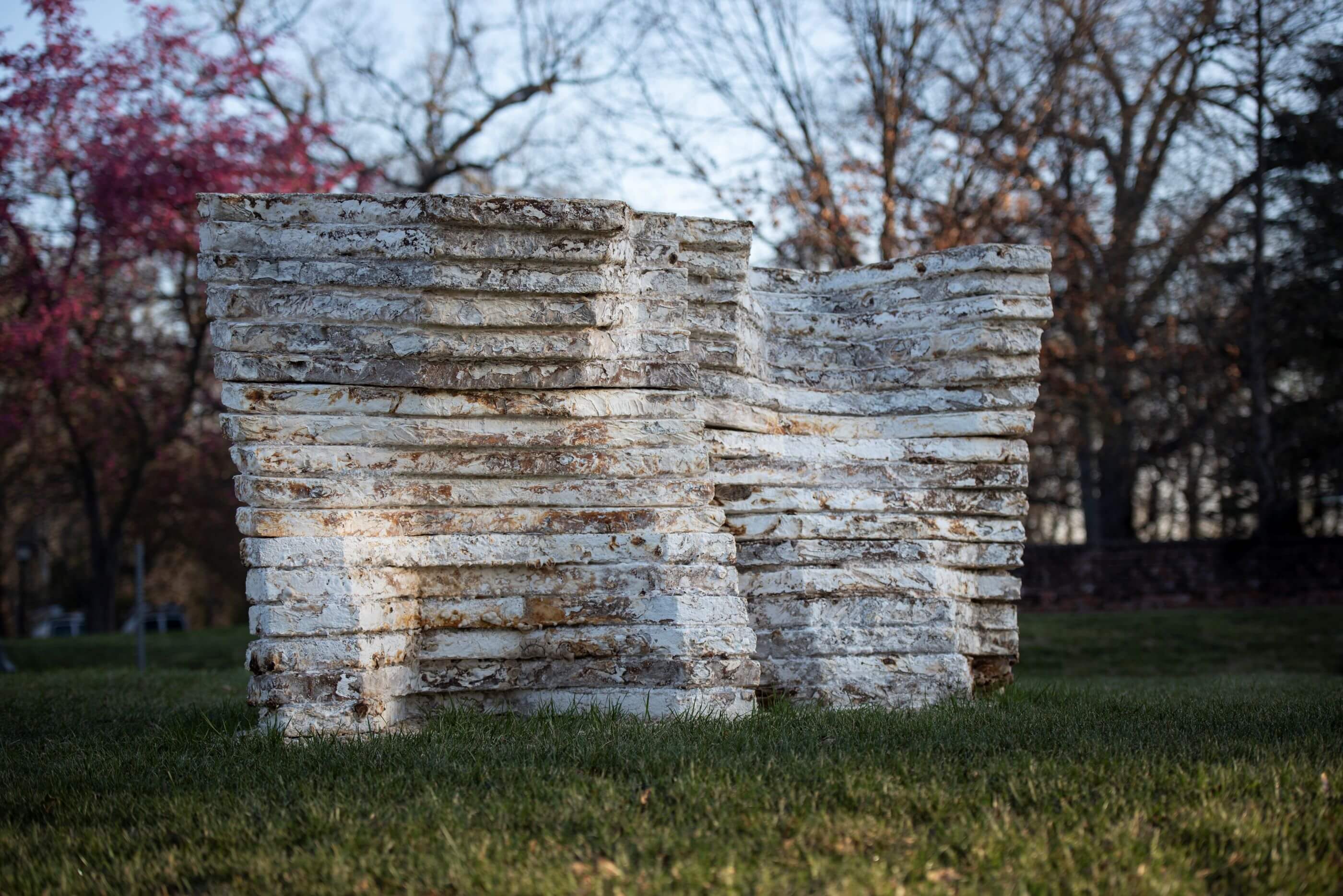
Forming a breadth of both regional and technological approaches, the installations are perhaps best viewed as a series of potentialities. Each individual installation has its own interest and successes: Unlog’s novel fabrication method has an uncanny relation to stick framing while incorporating curved and warped surface effects. Mix and Match combines delightful filigree and playful object out of cast-off material to wonderful effect. From Wood to Tree completely reconsiders a new architecture not for humanity, but for the non-human realm, while MycoCreate 2.0 discovers the novel structural and spatial capacities of a biodegradable material. But even more significant is when taken together, the five projects demonstrate the branching permutations that are possible with organic materials. Wood to mycelium, hi-tech to low-tech, A-frame to vault, stick framing to masonry, the architectural applications of biomaterials are endless. MacDonald and Schumann envisioned this collective diversity as seeds in the public consciousness: “Having these things be built in the world we see as being really important [in] terms of what people can imagine is possible at an architectural or inhabitable scale,” Schumann told AN.
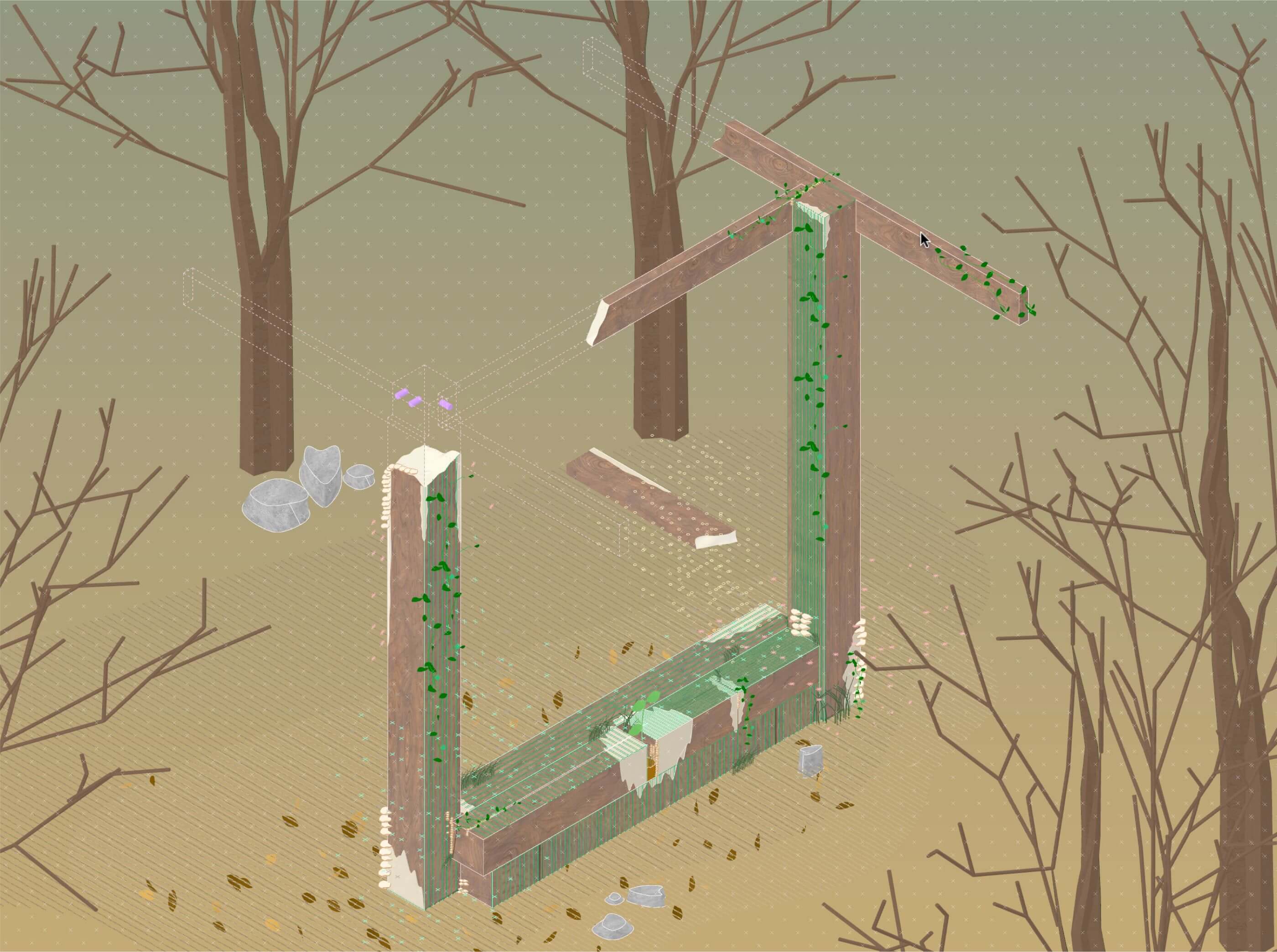
And while they each utilize different technologies to varying degrees, the installations also make evident that “natural” architecture does not stand opposite to “digital” architecture, just as the natural and technological more broadly are not distinct, either. Architecture that seeks to address the building industry’s role in the ongoing climate crisis is inherently digital. Digital workflows and the iterative logics of both biological evolution and computational design processes are embedded in each of the projects in different ways, through the logging’s 3D scanning, to robotic milling, to simulations, to basic Rhino modeling. The Biomaterial Building Exposition introduces a new generation of architects using digital design and fabrication tools towards more than panelized freeform surfaces and mass customization. This generation is designing radically, both architecturally and ethically, as if the future generations of both human and non-human life could benefit from it.
The exposition ran through April 30, 2022 and each installation has a planned strategy for reuse, recycling, or biodegradation. It was funded primarily by The Jefferson Trust and the Center for Global Inquiry & Innovation with additional funding from participating institutions.






